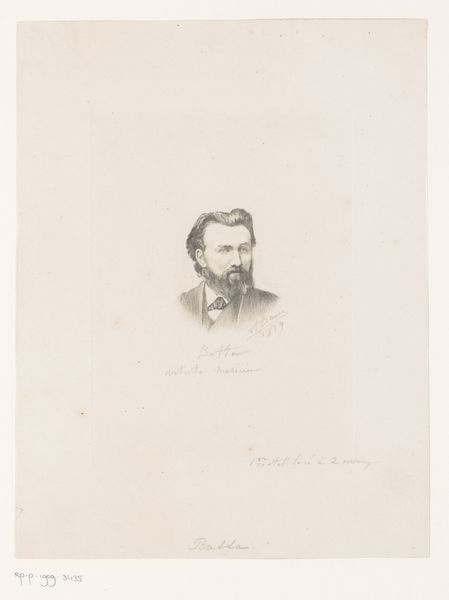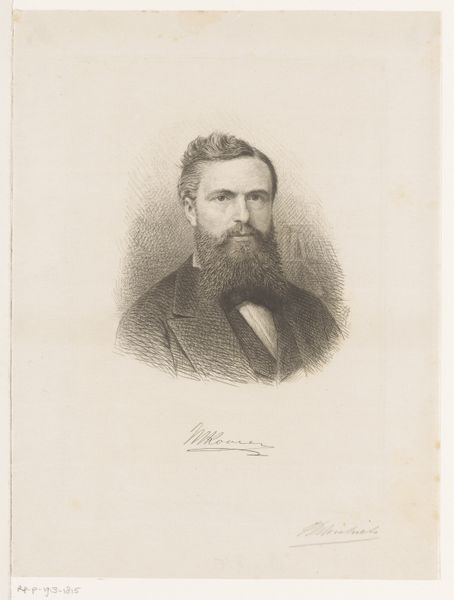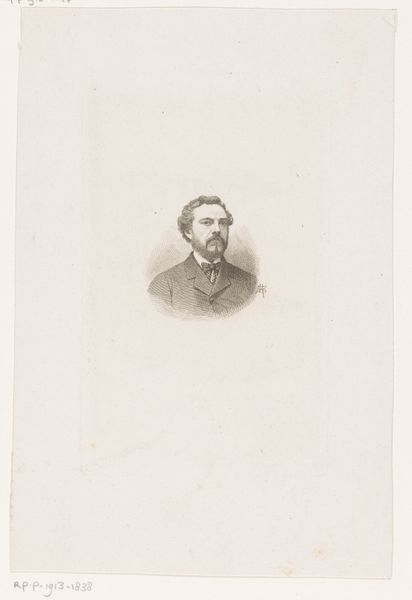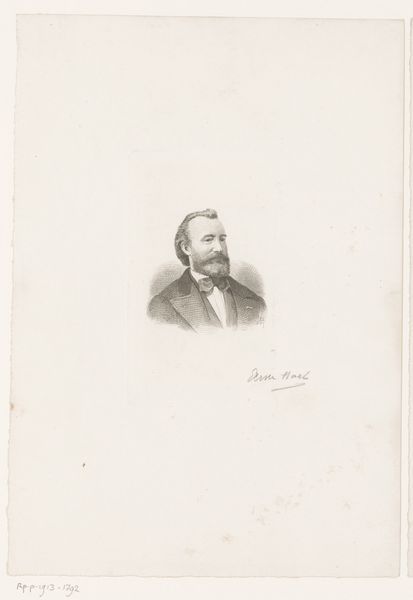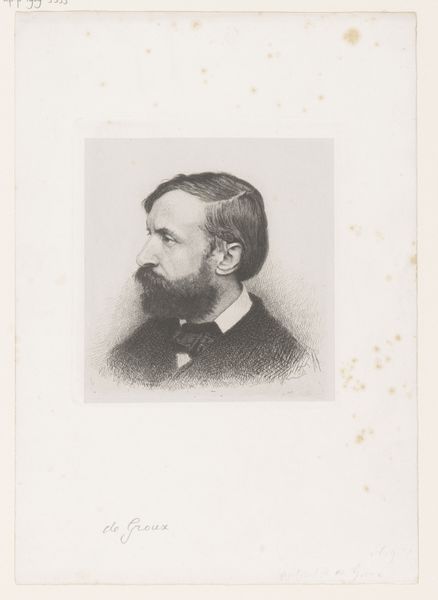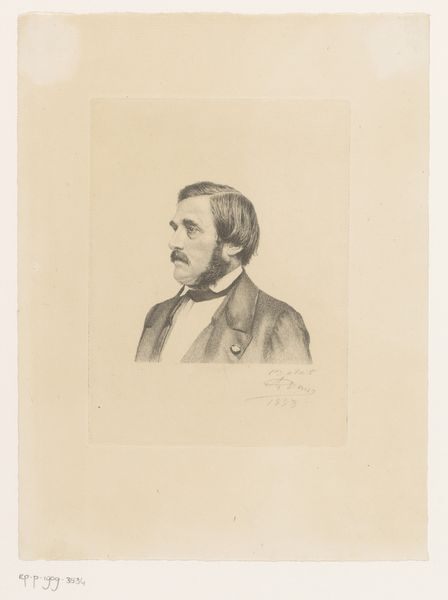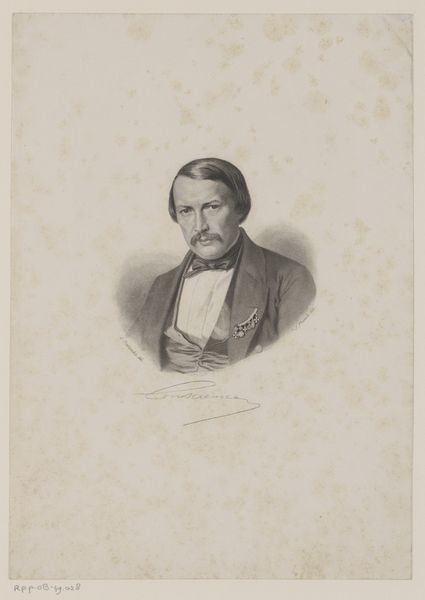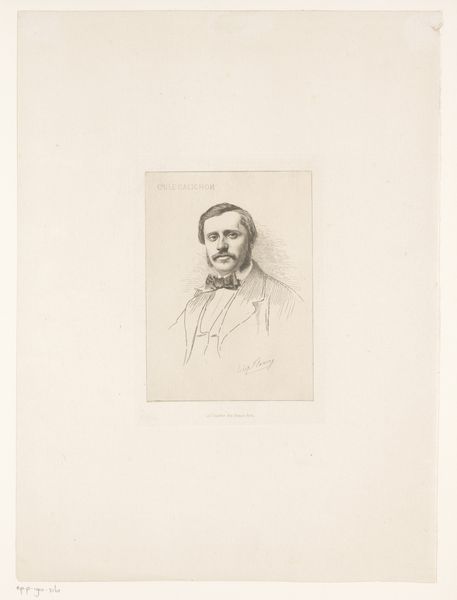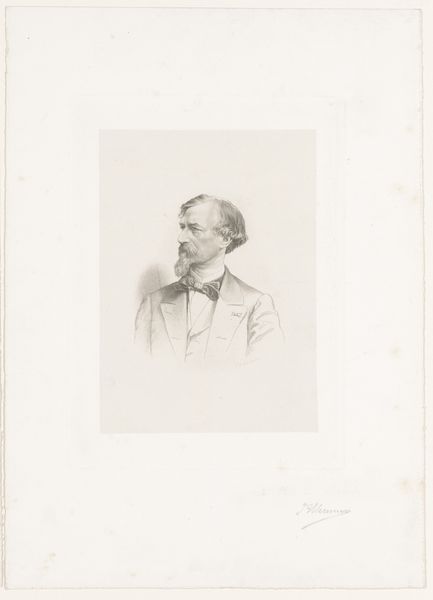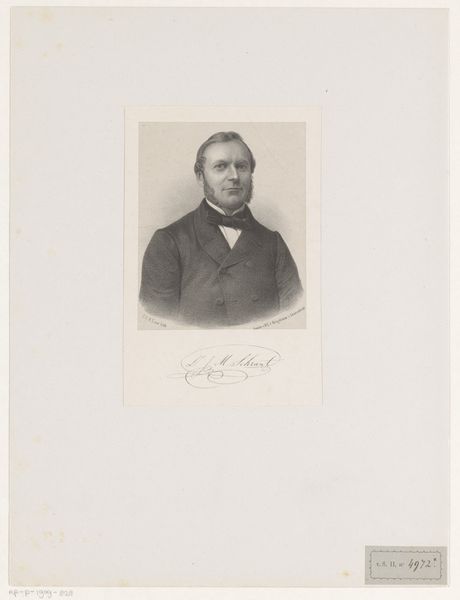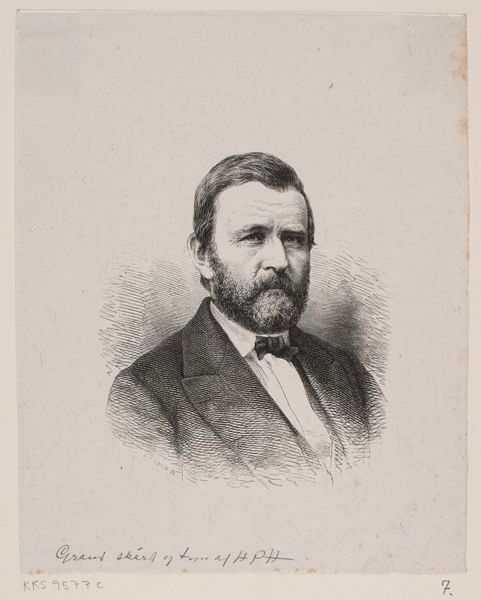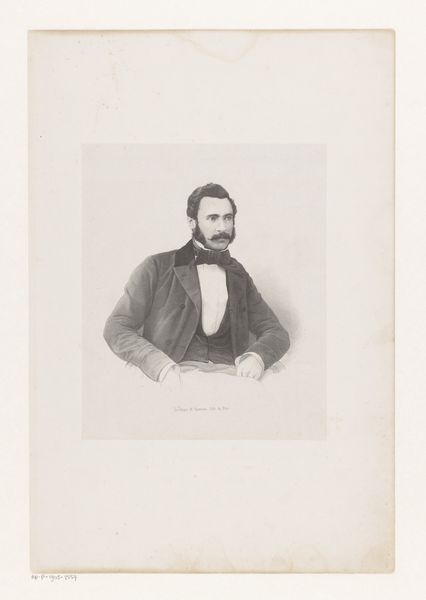
print, engraving
#
portrait
# print
#
old engraving style
#
engraving
#
realism
Dimensions: height 220 mm, width 147 mm
Copyright: Rijks Museum: Open Domain
Curator: This is "Portrait of Heinrich Paasch," a print made sometime between 1831 and 1890. The artist is Jean Baptiste Pierre Michiels. Editor: There's a severity in his expression, quite stoic, wouldn’t you say? The limited tonal range enhances that austere quality. It feels very grounded. Curator: The process is key. The fine lines of the engraving define the form, created with incredible skill. Each mark represents labor. Consider the social implications of printmaking during that period—the accessibility it afforded for distributing likenesses. It democratizes portraiture, challenging the elite's exclusive ownership of representation. Editor: And structurally, the composition leads your eye right to his face. The bow tie draws a visual line upwards, a clear hierarchy of focus created through deliberate form and materiality. It’s beautifully balanced. The soft shading also accentuates the textures of his jacket. Curator: But the materiality of that jacket speaks volumes, doesn't it? It suggests a certain class, and the act of producing the jacket has far reaching socio-economic impact. Who made it? Under what conditions? These are not frivolous questions; they get to the heart of representation itself! Editor: Undoubtedly. However, without close attention to how the artist uses the visual elements, we lose the narrative thread. Semiotics of clothing aside, the subtle asymmetry in his pose conveys dynamism within a formally restrained framework. Look at the deliberate choices in the cross hatching used to achieve specific shadow tones. It's masterful control. Curator: But the consumption of this image contributes to an economy! People bought these prints; perhaps they adorned homes. This perpetuates systems of representation and value! Editor: Perhaps, but within this particular work, there's visual economy, that is, the bare minimum is employed in representing details such as the jacket folds, hair texture or expression lines, thereby extracting a distilled impression of a stern and dignified personality. Curator: Thinking about the network of creation, distribution, and use expands our understanding. I find it essential to acknowledge the production of the print itself in order to avoid simply lauding bourgeois values. Editor: Ultimately, for me, its power lies in the meticulous application of its medium—engraving—to convey a potent sense of dignity, and yes, the severity that’s inherent in that visual language.
Comments
No comments
Be the first to comment and join the conversation on the ultimate creative platform.
